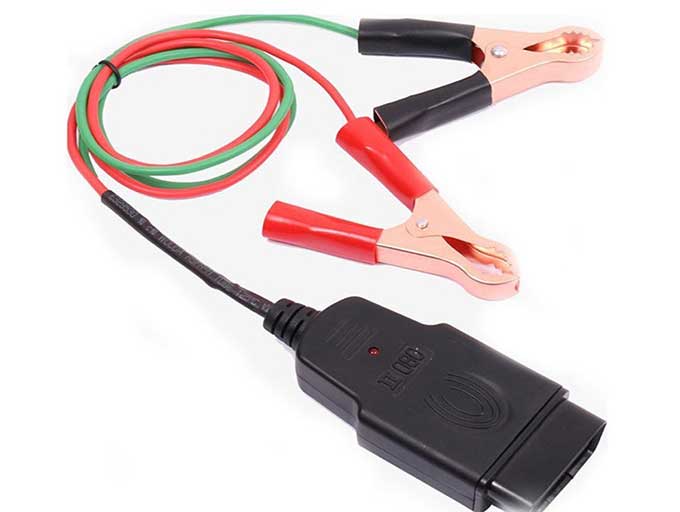OBD II Power Supply Cable

Preserves vehicle codes and electronic presets when swapping car battery
When replacing your car battery, or even trickle charging it, it is often advantageous to power the car externally. Supplying power to the car while the battery is swapped out preserves ECU adaptation codes, time of day clock settings, trip meter values, radio security codes, etc. It also prevents sparking at the terminals of the new battery when when the cables are reconnected since the cables are already at 12V potential.
Powering the car can be be done through the cigarette lighter socket, but this has the disadvantage that this socket is usually switched, requiring the keys to be inserted and at least turned to the ACC position, energizing extraneous accessories and increasing the load/drainage on your external backup battery/power pack.
The car’s OBDII connector has a non-switched, always on, 12V pin (and GND). Connecting your backup power through the OBDII connector allows you to take your keys out of the car, lock it (with the fob, etc), and leave it, for days if necessary. When the car’s main battery is removed I will put a nitrile glove over the positive (red) connector as this connector is still energized by your backup power and you don’t want in touching some engine part and shorting. Just don’t try starting your car with power through the OBDII connector. At best you’re more than likely to blow a fuse somewhere.
01/8/18Outzone OBD II Memory Saver Connector OBD2 16pin Memory Saver Connector with Two 2 Alligator Clips ($15)






